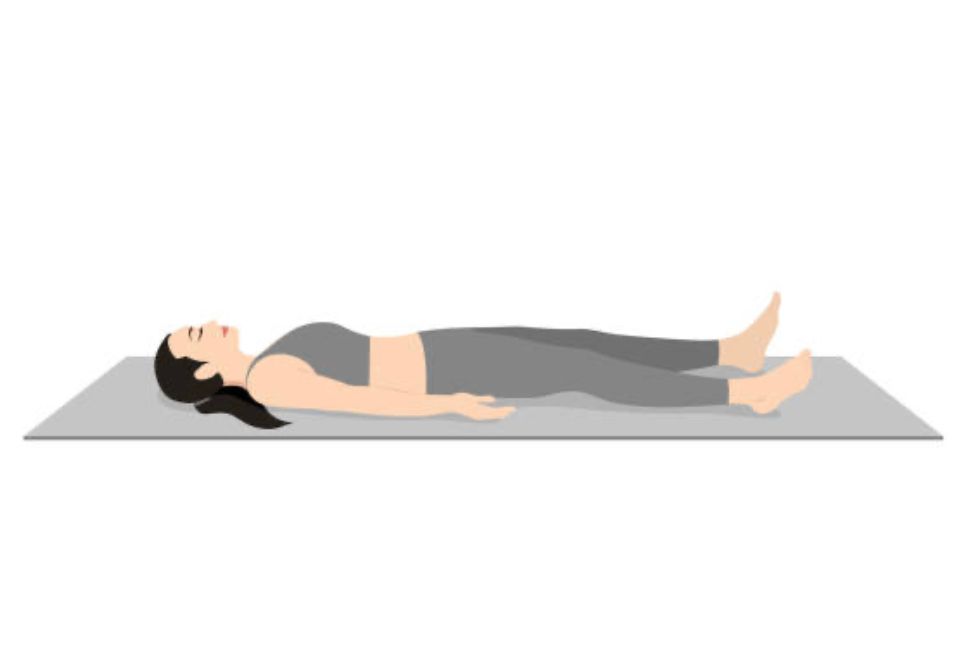I seem to be hearing far too often how people are plagued with insomnia.
From Gurgaon’s busy corporate bees who wake up every day to live under the stress of deadlines, to students preparing for competitive tests; to the elderly, who are ailing or lonely or not getting a decent amount of exercise; falling asleep has become a challenge for many like these.
People often think their circadian rhythm or sleep cycle is strongly influenced by their physical fitness. However, as a yoga teacher, I have witnessed sleep being more dependent on psychological factors.
Any kind of stress, anxiety or depression can take a toll on mental health, which will snatch away our peaceful sleep. This is why after every exhausting day, calming the mind to reach a place of tranquility is imperative, so that sound sleep follows effortlessly.
Here’s where yoga comes into the picture.
Yoga works by combining the benefits of regular exercise along with conscious breathing, meditation and mindfulness – specially helpful is the practice of Yoga Nidra, or guided relaxation.
Online Yoga Classes aren’t just about achieving that lean physique one always dreams of; yoga classes should also help us achieve a deep sense of peace, equilibrium and relaxation which will lead to better, deeper and more sound sleep.
Today let me just dwell on the practice of Yoga Nidra and how it can be effective in calming our nervous system.
What is Yoga Nidra?
Also known as yogic sleep, Yoga Nidra is an ancient practice intended to help us return back to a state of relaxation. Yoga Nidra leads us to a state of consciousness where we hover between being awake and being asleep. The students lie down comfortably, with a blanket over their bodies to stay warm while the teacher speaks and guides one through various visualisations – the students travel through the four stages of brain wave activity: Beta, Alpha, Theta and Delta. There is deep muscular relaxation and the conscious level of the mind also relaxes. In this state the subconscious and unconscious forces of the mind awaken and become sharp. All the suggestions made by the teacher are heard by these levels of the mind. At this level deep impressions are formed. The subconscious mind takes strong notes of all that it hears.
One can utilise this technique of Yoga Nidra to rid oneself of bad habits, to achieve success and to release stress and tension.
How Can Yoga Nidra Help?
The many benefits of Yoga Nidra, include:
Calming the sympathetic nervous system, responsible for the “fight or flight” response, which then induces deep, soothing relaxation.
Facilitating the natural release of melatonin, the sleep hormone, and preparing the body for a restful state.
Alleviating anxiety and fostering a state of serenity.
Yoga Nidra has a long history of supporting patients experiencing physical and mental disorders. It can be used to help patients with post-traumatic stress disorders (PTSD), depression, anxiety, menstrual disorders and conditions like diabetes.
Few Asanas to do before settling in for Yoga Nidra:
Shavasana (Corpse Pose): This is the quintessential Yoga Nidra posture. Lie down on your back with arms and legs relaxed, palms facing up and focus on releasing tension from each body part. One can place a thin pillow to support ones neck and head, and have a light blanket over ones body.
Viprita Karni (Legs Up the Wall Pose): Sit with your hips close to a wall, then swing your legs up against the wall, forming an L shape. One can have a bolster under ones hips to elevate them slightly. This inversion is a good way to ease a sluggish blood flow from ones lower extremities; using gravity to get stagnant blood back into circulation.
Supta Baddha Konasana (Reclining Bound Angle Pose): Lie on your back with the soles of your feet together and knees apart. This pose opens the chest and promotes relaxation in the groin and hip area. One can have a block under each knee to support the legs.
Balasana (Child’s Pose): Kneel and sit back – big toes touching, heels falling apart and settling the hips between the heels. Keep your knees and thighs together. Stretch your arms forward and rest your forehead on the floor, resting and preparing one’s mind for Yoga Nidra. If the forehead does not reach the floor, place a cushion or bolster under your forehead.
If you want to tap into the benefits of Yoga Nidra, enrol for Online Regular Yoga Classes. Join ‘Yoga With Sapna’ today.
